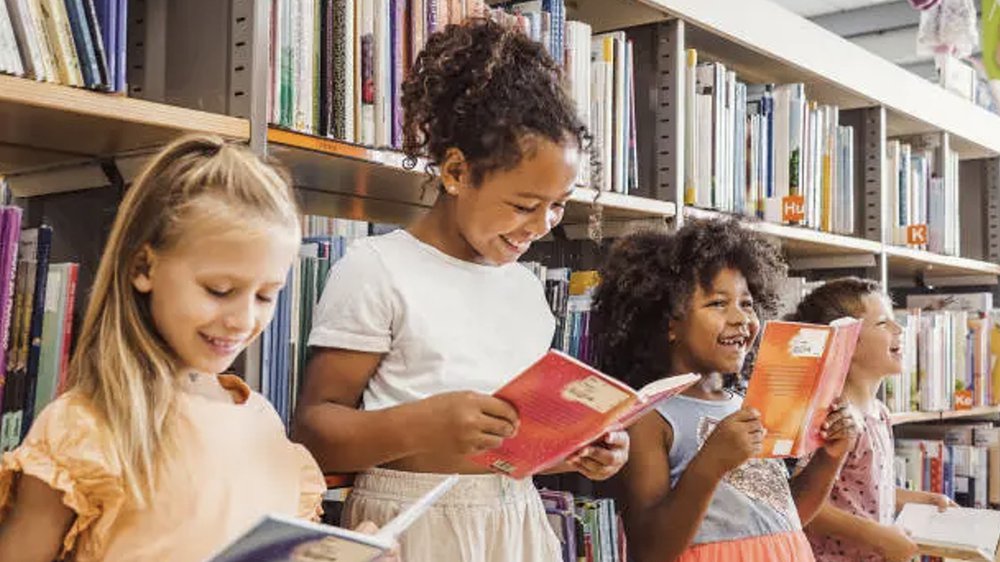Developing strong phonics skills in the early grades is essential for students to become fluent, independent readers. The science of reading shows us that when children know the letters of the alphabet and the sounds they make both alone and in combination with each other, they’re ready to use those building blocks to decode and read increasingly complex words and sentences.
Much of phonics instruction involves practice and repetition. However, learning phonics skills doesn’t have to be a monotonous task. By using creative and engaging approaches, teachers can make the process of learning phonics fun and interactive, helping students connect with these vital skills in highly enjoyable ways.
Here are some ways to make phonics instruction come alive while ensuring that children have fun while they learn.
Music and songs
Incorporating catchy songs into phonics instruction strengthens letter-sound associations while making the lessons enjoyable and memorable for students.
Songs are powerful tools for language development. There’s a reason why TV shows like Sesame Street are so popular—and effective—in helping children learn. Research shows that setting lessons to music helps students focus more successfully and also retain what they’re learning.
When teachers use songs to teach phonics skills, young learners are hearing and repeating the letter sounds as they sing. This repetition helps reinforce phonics knowledge in a way where students don’t even realize they’re learning—they’re simply having fun and enjoying themselves.
Music can also raise children’s spirits and improve their attitude toward learning. Listening to music releases endorphins, which are the chemicals in our brains that make us feel good. This has many benefits, such as reducing the anxiety that many students struggle with and bringing joy to the learning process.
Interactive games
Playing interactive games is another way to engage students in phonics instruction in a fun, hands-on manner.
Matching games, in which students must rely upon their recognition of various letters and phonemes, are an effective way to reinforce newly learned phonics skills. For instance, students might play Go Fish using flash cards with letters printed on them, and their goal is to make matching pairs of various letters. Another option is to play Phonics Bingo using grids with individual letters or short, high-frequency words placed in all of the spaces. As the teacher calls out various letters, letter sounds, or words, students must mark them off—and the first child to complete a full row or column is the “winner”. But everyone student wins with additional gamified practice.
Other ideas include word creation games, in which students are challenged to use blocks or letter manipulatives to build words with certain patterns, such as consonant-vowel-consonant; scavenger hunts, in which students are asked to identify items in the classroom whose names begin with certain letter sounds; and relay races, in which teams of students race against each other or the clock to identify the letters that make certain sounds.
Games that give children opportunities to move around the classroom can lead to better achievement. Movement increases blood flow, which awakens students’ cells and stimulates their brains. In turn, students feel more alert and can focus more successfully on learning. A report from the Centers for Disease Control and Prevention observes that physical activity “can have an impact on cognitive skills, attitudes, and academic behavior, all of which are important components of improved academic performance.”
Digital tools and apps
Technology can provide personalized, interactive learning experiences that adapt to each student’s pace and needs, making phonics instruction highly engaging and accessible.
Digital apps and instructional programs offer modeling, hints, immediate feedback, and scaffolded support for students as they complete phonics lessons online. Personalized learning paths deliver precisely targeted instruction for every child, ensuring that students are appropriately challenged without becoming bored, frustrated, or overwhelmed by the content. What’s more, gamified learning elements make the lessons captivating and fun.
At-home learning
Students learn most effectively when they have opportunities to take the lessons they’ve learned in school and practice these skills at home. With the right guidance and support, families and other caregivers can extend their children’s learning beyond the school day by building on the instruction students receive in the classroom.
Teachers can facilitate at-home learning by giving families specific ideas for how they can encourage their children to practice phonics skills outside of school. For instance, parents can have their children identify items around their home that contain certain letter sounds their children have recently learned about, like “rug” and “tub” for the short “u” sound.
Schools can also encourage at-home learning by sending students home with decodables for daily read-aloud sessions and using software platforms that students can log into from home.
Fostering a love of learning
By incorporating music, games, technology, and at-home learning, teachers can make phonics an enjoyable and engaging part of literacy instruction. These creative approaches not only support phonics development but also help foster a love for learning among students.
About the author
Dr. Cheryl Lundy Swift is podcast host of Literacy Matters: Empowered Conversations and the Director of Professional Learning and Academic Partnerships for Learning Without Tears, which takes a multisensory approach to literacy and writing instruction.











